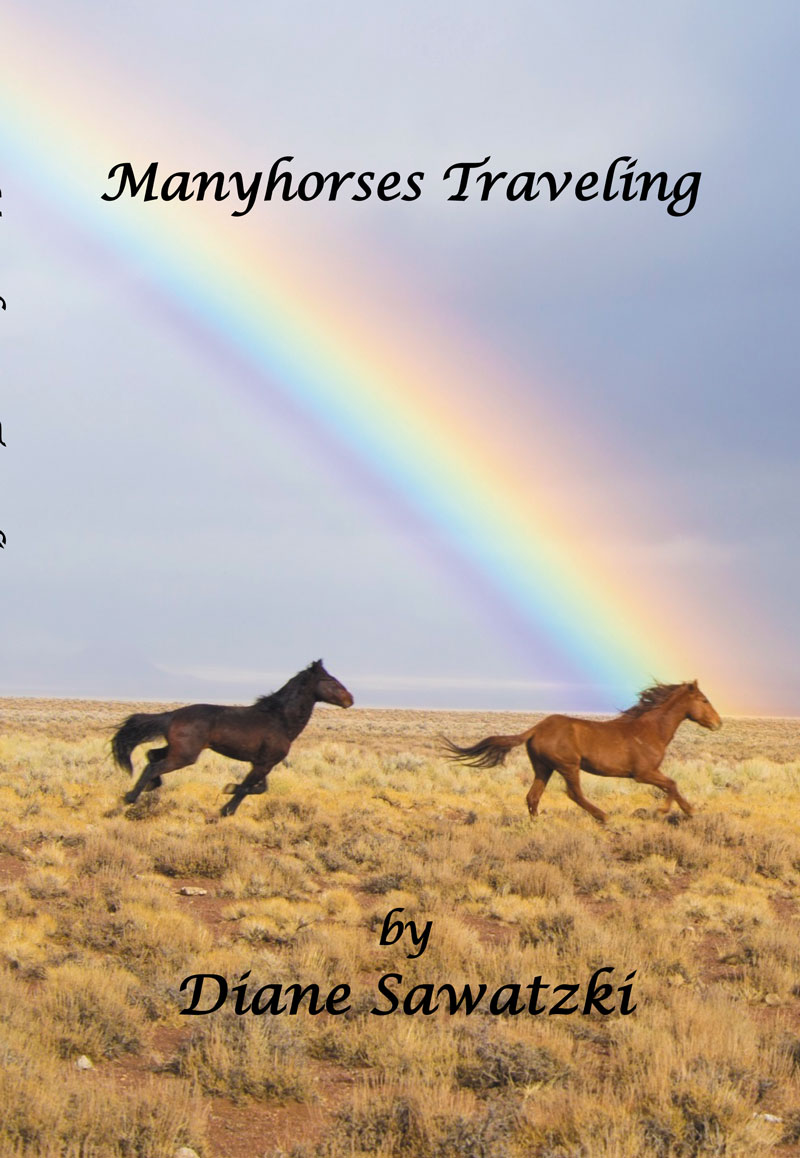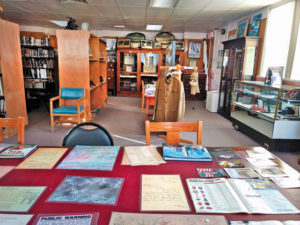Manyhorses Traveling
By Diane Sawatzki
Palmer Divide Productions
Paper 223 pp $14.00/Kindle $4.95
Reviewed by Annie Dawid
Manyhorses Traveling begins just as the narrative of Diane Sawatzki’s previous book, Once Upon Another Time (2012) ends. The new novel can stand on its own, but provides more pleasure as a sequel to the first book. Both novels travel in time from 1860s Colorado to contemporary life in both the Centennial State and Washington.
The most intriguing parts of the book occur in the South Park area in 1863, when the Utes and Arapahoes war against one another; miners, traders and bandits commute from (Old) Colorado City; and the indigenous cultures fight to keep their traditions in the face of brutal white expansion.
[InContentAdTwo]
The protagonists continue their passionate relationship between worlds: Victor Manyhorses Traveling of the 19th century Tabeguache band of Utes, and Kate MacKenzie, a widowed white Seattle high school teacher of the 21st. Which world can contain them both? For this reader, the appeal of the earlier century’s open lands of Colorado rises above anything contemporary, but for the characters, their choice is not simple or obvious.
Victor and his granddaughter, Little Eagle, travel into our world with Kate as the narrative takes off, and Kate must reveal the truth of her time traveling to her elderly grandparents, who, surprisingly, accept the fact of her time travel along with the new boyfriend arrived from another world. “Will you miss being back in the past?” the grandmother asks.
I’ll miss the wildness of it, the freedom to ride among the Shining Mountains. I’ll miss my people, but according to white man’s history, the tribes will be forced onto reservations. After we rescued Eagle, Kate tried to talk me into bringing her to the future, but I resisted. I wanted her to live with Utes and learn our culture, but I suspected she’d have a better life here.
 The tragic element of the demise of that indigenous life lurks beneath the lighthearted tone of the narrative. Victor has time-traveled before he met Kate, and through reading history, discovers the horrors the twentieth century has in store for his people and much Native American culture. He learns to appreciate contemporary amenities like headlamps and ibuprofen, navigating both worlds with élan, yet knowing, always, that the dignity and freedom of the 19th century Utes are coming to an end, he alone among his people cognizant of the dismal future.
The tragic element of the demise of that indigenous life lurks beneath the lighthearted tone of the narrative. Victor has time-traveled before he met Kate, and through reading history, discovers the horrors the twentieth century has in store for his people and much Native American culture. He learns to appreciate contemporary amenities like headlamps and ibuprofen, navigating both worlds with élan, yet knowing, always, that the dignity and freedom of the 19th century Utes are coming to an end, he alone among his people cognizant of the dismal future.
In the contemporary part of the novel, most of which takes place in the state of Washington, Victor meets West Coast indigenous peoples of the 21st century, the Swinomish tribal community, some of whom continue certain old ways, and when he spends time with them, Victor feels the pull of his people calling him back through time.
When he flees this world for the past, we know Kate is sure to follow, and once again, we travel along, Kate packing her iPhone to photograph what no longer exists. Her grandfather laments, “I must admit I’m jealous. I’ve studied history in books, but you and Victor have really lived it.”
While many contemporary readers may have nostalgia for a past known only from history books, Sawatzki makes sure not to romanticize the pre-industrial era. In one section, the 16-year-old Doozie, Kate’s saloonkeeper friend, suffering from a sore tooth, ends up at a “dentist” – the man who also serves as barber and metalsmith, who operates with whiskey as his sole anesthetic, both for his patient and his own nerves.
Although the relationship between Kate and Victor has its vicissitudes, like any romance in any era, the ties they form appear to stand “the test of time.” Any reader who yearns for a future in which they will thrive can hope for yet another volume in the series.



